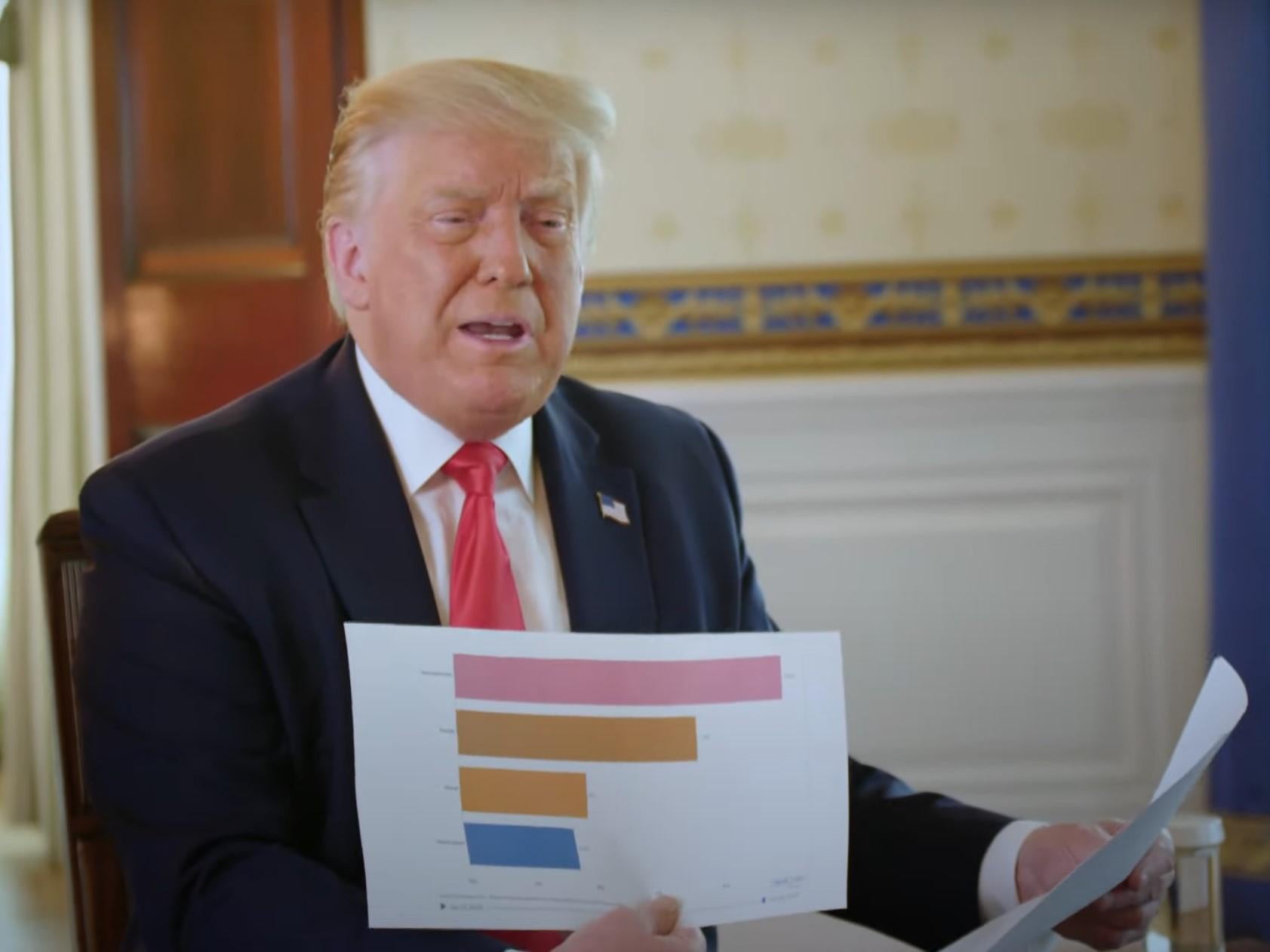Coronavirus tracked: Explaining Trump’s confusing charts and debunking his claims
‘United States is lowest in numerous categories,’ Trump claimed. ‘We’re lower than the world’

Your support helps us to tell the story
From reproductive rights to climate change to Big Tech, The Independent is on the ground when the story is developing. Whether it's investigating the financials of Elon Musk's pro-Trump PAC or producing our latest documentary, 'The A Word', which shines a light on the American women fighting for reproductive rights, we know how important it is to parse out the facts from the messaging.
At such a critical moment in US history, we need reporters on the ground. Your donation allows us to keep sending journalists to speak to both sides of the story.
The Independent is trusted by Americans across the entire political spectrum. And unlike many other quality news outlets, we choose not to lock Americans out of our reporting and analysis with paywalls. We believe quality journalism should be available to everyone, paid for by those who can afford it.
Your support makes all the difference.Donald Trump has made a series of claims about how well the US is coping with the coronavirus pandemic, declaring that it is “under control”.
In an interview with Axios correspondent Jonathan Swan, the president denied that the US was dealing poorly with Covid-19, despite averaging around 60,000 new cases and more than 1,000 deaths per day.
“Take a look at some of these charts,” Trump said, pulling out a stack of papers. “Here’s one, right here, United States is lowest in numerous categories. We’re lower than the world.”
The chart Trump was referring to was deaths as a proportion of cases, rather than the more relevant statistic of deaths as a proportion of population.
By this measure, the US is the ninth worst-performing country in the world, ahead of other countries with high numbers of total deaths like Brazil, Russia and India.
Trump’s claim that the US is “lower than the world” is technically correct, though of course the world includes the United States.
When measured against the global average of deaths per capita, the US has a death rate five times higher.
Trump has consistently claimed that the US only has such a high number of cases because it does more tests than any other country.
He has also previously said that if the US did fewer tests, then there would be fewer cases – at least officially. During the latest interview, he once again suggested the US is testing too much.
When the interviewer questioned this, Trump told him to “read the manuals”, though changed the subject before explaining what manuals he was referring to.
Official figures reveal that the US is not in fact testing more than any other country in the world, ranking eighth when measured as a proportion of population.
Trump chose his statistics selectively, attempting to avoid figures that reveal the true extent of the crisis in the country: the US has nearly 5 million confirmed cases of coronavirus, accounting for more than a third of all cases in the world.
“Here’s one right here,” Trump said, gesturing to a chart that was not explained. “We’re last, meaning we’re first. We have the best.”
Trump also claimed “death is way down from where it was ... it’s going down again.”
But while it is down from its peak, the number of new deaths in the US has once again begun to rise.
Trump also claimed that several of the worst hit states are beginning to see death rates drop, although this is not true.
He said: “It’s going down in Arizona, it’s going down in Florida, it’s going down in Texas.”
The seven-day rolling average for daily deaths in all three states he mentioned are trending upwards.
It is not the first time Trump has made false claims about the extent of the coronavirus’s impact on the US and has rallied against lockdowns and other containment measures.
Within hours of the interview being aired, Trump tweeted: “OPEN THE SCHOOLS!!!”
Join our commenting forum
Join thought-provoking conversations, follow other Independent readers and see their replies
Comments